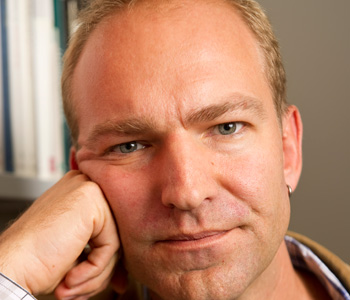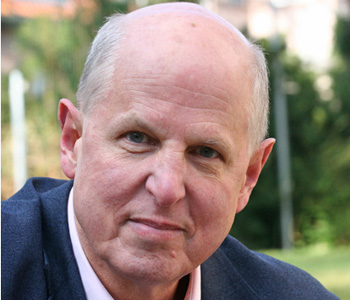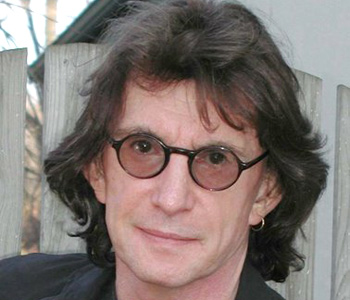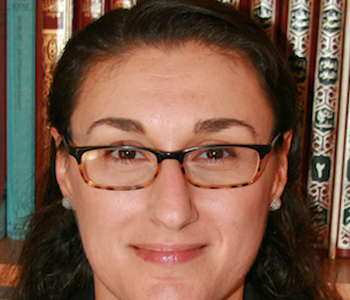Michael Kimmage
The Conservative Turn: Lionel Trilling, Whittaker Chambers and the Lessons of Anti-Communism
Harvard University Press
440 pages, 9 x 6 inches
ISBN 978 0674032583
The Conservative Turn is an intellectual history of American anti-communism told through the biographies of two intellectuals, Lionel Trilling and Whittaker Chambers, who met as Columbia undergraduates in the 1920s.
Both of them were communists in their youth, and both would become anti-communists in the 1930s, only to travel in two separate ideological directions, representative men for the purposes of this book. A scholar and a literary critic, Trilling was an architect of liberal anti-communism, an advocate of secularism and political pluralism who sought a reasoned moderation as the antithesis to Soviet communism. Chambers, a Christian and a conservative, saw the Cold War as a battle of competing faiths, a revolutionary atheism on one side of the Iron Curtain and an open question on the other. Ideally, for Chambers, America would fall back on its Christian resolve, though he was convinced that the Soviet Union would win the Cold War.
The Conservative Turn comes together around a single book, Trilling’s novel of the 1930s, The Middle of the Journey, published in 1947, in which Chambers is one of the main characters. In this novel Trilling traces the demise of radicalism, the travails of liberalism and the birth of an American conservatism. The Conservative Turn tells the story of a particular generation, whose experience with communism was first-hand and in a sense life-long; at the same time, it provides a portrait of the early Cold War, when the Left was moderating its position and the Right was coming into its own as a force in modern politics.
This moderation and this modernization together constitute the core of my argument: that anti-communism’s legacy was a moderation of the American Left and a modernization of the American Right.
Though The Conservative Turn is a work of scholarship, with footnotes and such, it is not intended for specialists. It addresses fundamental themes in American history – the radical Thirties, the start of the Cold War, the rise of the conservative movement – and it uses biography and narrative history to bring these themes, and these transitions, to life.

It is the rotating double helix of red and blue that deserves historical study, not the illusion that red and blue run on parallel, unchanging tracks or the more seductive illusion, common enough on both sides of the political spectrum, that the history of red and blue can, or should, be written as the history of good and evil.
The Conservative Turn began, alas, as a dissertation, which is one reason why it’s based on archival research. I had entered graduate school with an interest in the Russian Revolution and its resonance in American intellectual life. Gradually, I came to feel that one side of the story had already been written, and this was the record of American enthusiasm for the Soviet experiment, from 1917 through to the 1940s. Furthermore, this enthusiasm died out over time, and there is little formal connection between pro-Soviet sentiment and American politics, only the sectarian history of marginal far-left parties. And so I turned to the other side of the story, to the bottomless subject of American anti-communism. Not only was this an impulse that cut across American society – from Catholics to Jews, from rich to poor – it was one that helped to create a conservative movement.
The conservative movement would grow into a crucial strand of modern American politics, first with Barry Goldwater’s 1964 presidential campaign and then, emphatically, with Ronald Reagan’s election in 1980. Anti-communism had stimulated a certain kind of conservatism in America, receptive to religion, laissez-faire in economic orientation and populist in spirit: the patron saint of this movement was Ronald Reagan. My widest-angle lens was set on this movement, which is attracting ever more scholarly attention but is still an under-studied phenomenon (especially by comparison with the American Left).
Additionally, American conservatism or modern American conservatism is less self-evident in definition and structure than American liberalism, which flows from the American Revolution, continuing through the nineteenth century and, with some modifications, into the twenty-first. Defining conservatism is itself a difficult task. What is American conservatism? And what is modern American conservatism? I have not exhausted these questions with my book, and I doubt that they will soon be exhausted by other scholars.
I settled on Trilling and Chambers because they imposed a human element on a subject that can quickly devolve into abstraction and because they lived through similar historical phases, without thinking the same thoughts or arriving at the same conclusions. I prefer the history of choice to the history of inevitability. I therefore devoted much attention to Trilling’s political choices, his chosen liberalism, and to Chambers’s chosen conservatism. Several welcome ironies emerged: Trilling the liberal was at home with the anti-communist status quo of the 1950s, with the age of Eisenhower, and largely horrified by the radical Sixties, while Chambers the conservative believed that conservatism and modern America could never be decently combined, that the more modern America would become, the more a pious traditional agrarian conservatism would fade away. It was as if, for him, the only adequate culture would have to be a counter-culture. Chambers enjoyed Allen Ginsberg’s poetry – Ginsberg having been a rebellious student of Trilling’s – and Chambers anticipated the Sixties counter-culture by “dropping out” and living with his family on a farm in Maryland, an early refugee from the melancholy of modern, suburban, hi-tech America. Trilling gladly lived his adult life in Manhattan, very much a New York intellectual.
If the main abstraction in The Conservative Turn is conservatism, the immediate experience of Trilling and Chambers was a struggle with such abstractions, personal, political and intellectual. Their history – and the intellectual history of their period – is the history of this struggle.
In addition, Chambers is a necessary figure for understanding twentieth-century U.S. history and not because his personal story is at all representative. As a communist, he was a spy for the Soviet Union; as an anti-communist, he participated in a high-profile court case, which came to be known as the Hiss case, a battle of words between Chambers and Alger Hiss, a mid-level Washington bureaucrat who spied for the Soviet Union in the 1930s.
Chambers matters for his role in this case, and the case matters for its role in American history. The case fostered the precipitous rise of Richard Nixon, who championed Chambers and pursued Hiss; it is a recognizable point on the evolution of the postwar Republican Party; and it is inseparable from the start of the domestic Cold War in America. For conservatives generally, the Hiss case acquired great meaning, suggesting a connection between sophisticated Democrats, like Hiss, and treason—and a parallel connection between salt-of-the-earth common Americans and old-fashioned political virtue. Chambers would solidify the symbolic meaning of the Hiss case, for conservatives, in Witness, his 1952 bestseller, an early manifesto of the conservative movement.
By pairing Chambers with Trilling, I have emphasized Chambers’s intellectual stature – The Conservative Turn’s most arresting claim. Trilling’s is an obviously relevant voice to mid-century America, one of the era’s archetypal intellectuals, easily recognizable as such at the time and since. Chambers has often been understood as a political curiosity or oddity, fascinating for the non-marginal weirdness of his story and for his battle-to-the-death with Hiss. For many, he was a calculating spinner of lies, a professional informer and the cipher of Richard Nixon and the FBI in their collective scheming to undo the American Left. In The Conservative Turn, I have placed Chambers in an altogether different context, in the history of ideas, where it is easy enough to mingle conservative and liberal, Republican and Democrat, modern and anti-modern, New York urbanity and farm-bred agrarian romanticism.
In The Conservative Turn, Chambers is neither hero nor villain; and the same is true for Trilling.
The emotional center of this book lies in its epilogue. Here the style of writing changes, it slows down and becomes less analytical and more impressionistic. The epilogue sketches a relationship that finishes the argument, although the relationship lies outside the book’s chronological scope: this was the admiration for Chambers felt by Ronald Reagan, who knew passages of Witness by heart and spoke frequently of Chambers’s influence upon his thinking, both before and after becoming president.
The connection between Chambers and Reagan is not causal; there was no direct political influence (Chambers died in 1961); rather, the connection is intellectual and rhetorical, an angle of vision and a vocabulary that Chambers framed in his writing and Reagan eagerly assimilated, when piecing together his own notions of anti-communism and conservatism.
This concordance between intellectual and presidential history is mirrored in a singular event, with which The Conservative Turn concludes. In 1962, John F. Kennedy invited Lionel Trilling and his wife to the White House. There they enjoyed an evening of Kennedy-esque glamour, a celebration of liberal anti-communism, with tribute paid to the gifts artists and intellectuals (like Trilling) had given to politicians.
Put side by side, Kennedy’s acknowledgment of Trilling and Reagan’s of Chambers are meant to imply the staggered nature of their influence, the sense in which Trilling was someone whose time had come in 1962 and Chambers someone, though he was no longer alive, whose time would come in 1980. What distinguishes 1962 from 1980, for my book and for historical epoch it describes, is the ascendancy of the conservative movement, via the electoral successes of the Republican Party.

I settled on Trilling and Chambers because they imposed a human element on a subject that can quickly devolve into abstraction and because they lived through similar historical phases, without thinking the same thoughts or arriving at the same conclusions.
I think of my book as an anti-polemic, and it may be important, in this respect, that the book was begun shortly after the Monica Lewinsky scandal, researched in the early years of the W. Bush presidency and finished before the election of Barack Obama.
A popular paradigm for explaining American politics, in these years, was the red-blue electoral map of the United States, blue designating the urban coastal areas that tended Democrat and red the rural heartland that voted Republican. This paradigm corresponds directly to The Conservative Turn, as Trilling is an obvious forerunner to the blue constituency and Chambers an honorary red American, even if he owned a different kind of red in the 1930s.
My aspiration was to be neither red nor blue in the conceptualization and writing of my book, to grant history an authority that does not derive from political passion and – remaining within this simplistic color scheme – to suggest that there is no red without blue and no blue without red. It is the rotating double helix of red and blue that deserves historical study, not the illusion that red and blue run on parallel, unchanging tracks or the more seductive illusion, common enough on both sides of the political spectrum, that the history of red and blue can, or should, be written as the history of good and evil.
The significance of The Conservative Turn, beyond what readers may gain from its argument, is three-fold. It relates to contemporary America, to current divides between liberal and conservative, to current images of populist and elite, to current battles over the need for religion and the need for secularism and to current discussions of American power in the international arena. Its subject is not ancient history. To invert this first point somewhat, history’s salience betrays an extraordinary longevity of association: Trilling and Chambers were recognizably themselves in the 1920s; the Columbia curriculum and milieu of the early 1920s left a lasting imprint (their reverence for great books, for example, and their ambition to write great books that would influence the American polity); their relatively brief encounter with communism, in the 1930s, would echo all the way through the Cold War, from the McCarthy period, to Kennedy’s Camelot, to the rise of the neoconservative movement.
Lastly, Trilling and Chambers illustrate the complexity of political change and the degree to which political change is enmeshed in culture and ideas. Their movement from communism to anti-communism involved party politics and political philosophy, strategic considerations and ethical dilemmas, newspapers and novels. An alteration in the Soviet Politbureau could affect their views on political economy; a European novel or poem could inform their attitude toward party politics in America. This was the politics of intellectuals in the grand twentieth-century manner.
When Trilling and Chambers transformed from communists into anti-communist they had to rethink everything. The books for which they are famous – Witness for Chambers and The Liberal Imagination for Trilling – are eloquent, vibrant documents that chronicle this rethinking and make it accessible to later generations.




We don't put paywalls. We don't distract you with ads. We don't sell your data.
Please help to keep this running!